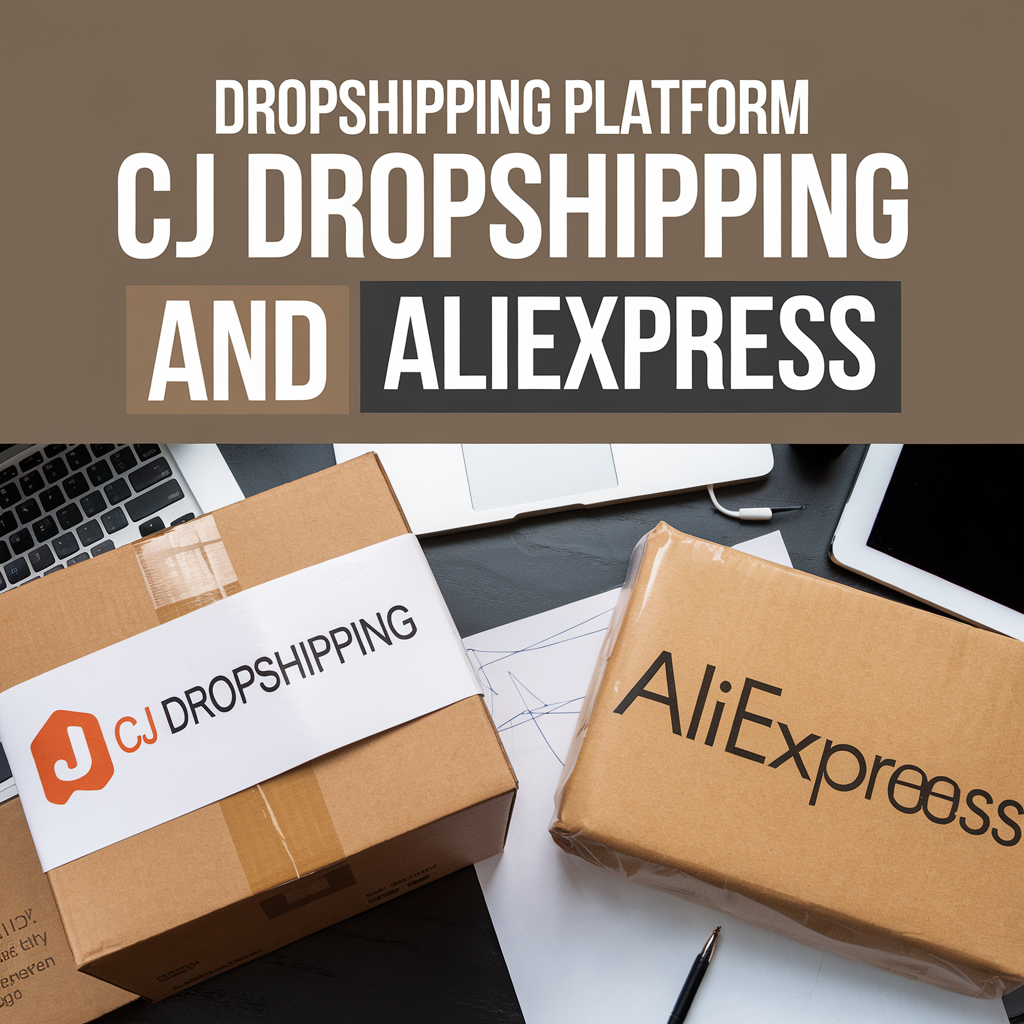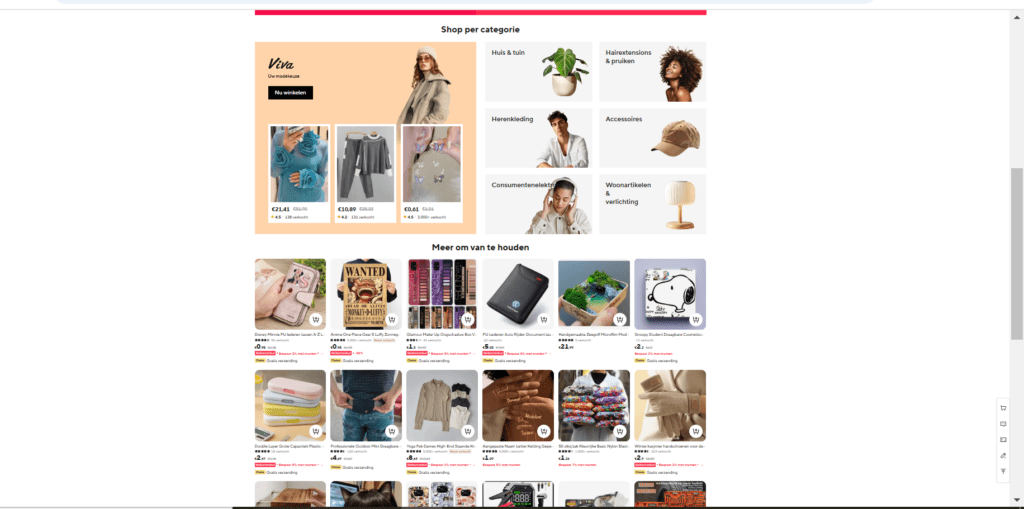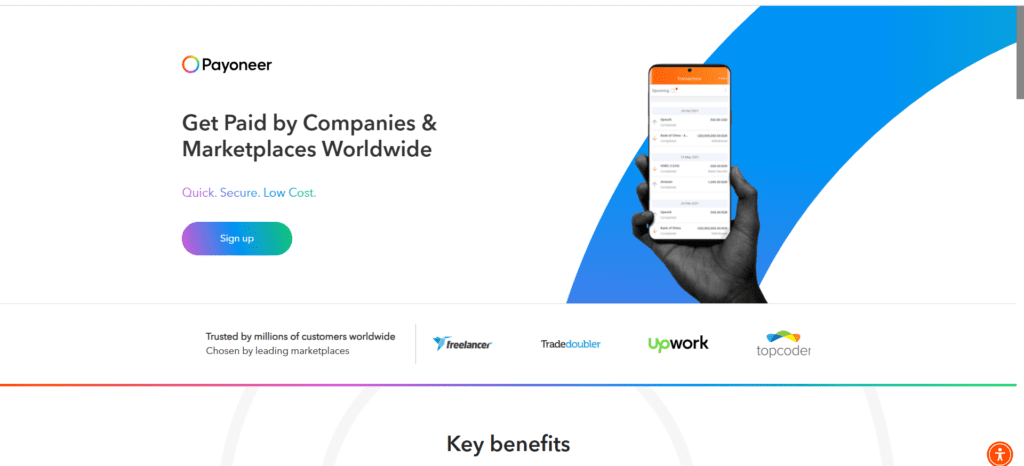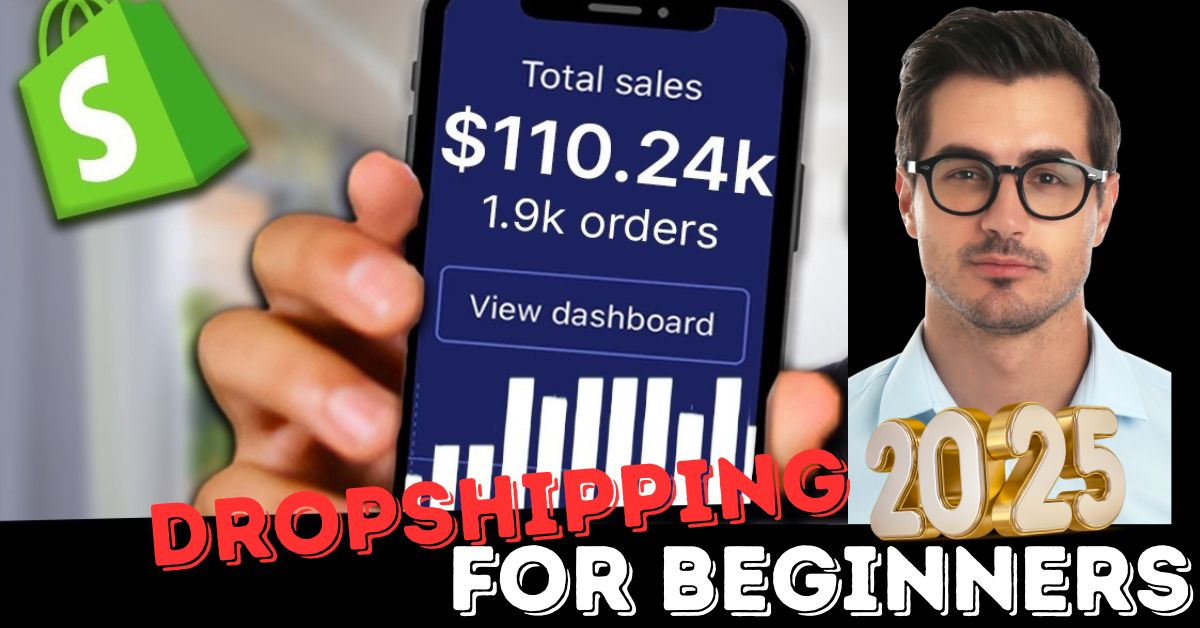Table of Contents
ToggleWhat is Dropshipping, and Why It’s Relevant in 2025?
Hey there! in this blog you will learn about howt to start dropshipping in Pakistanin 2025. Dropshipping is a simple way to sell things online. You don’t need to keep any products in stock. Instead, you work with companies who send the items directly to your customers. This means you don’t have to deal with storing products or running a warehouse.You act as the middleman between the supplier and the buyer, focusing on marketing and customer service.
In 2025, dropshipping has become one of the most popular ways to start an online business, especially for beginners. Why? Because it’s low-cost, low-risk, and highly scalable. You only need an internet connection, a good product, and basic tools.
For people in Pakistan, this model is particularly exciting. With a growing number of internet users and increasing trust in online shopping, the e-commerce market in Pakistan is booming. Platforms like Daraz, Shopify, and social media marketplaces have made reaching customers and selling products online easier than ever.Dropshipping lets people in Pakistan start online businesses without needing a lot of money.
Pakistan’s E-commerce Boom and Opportunities for Entrepreneurs:
The e-commerce industry in Pakistan has grown significantly in recent years, and 2025 is shaping up to be even bigger. According to recent studies, more than 100 million Pakistanis are now active Internet users, many shopping online. Many young people love to shop online. Social media sites like Facebook, Instagram, and TikTok are making this even more popular.
This is a great chance for people who want to start their own businesses to try dropshipping. Since you don’t need to handle products or deal with expensive logistics, you can launch your store quickly and focus on building your brand. The best part? You’re not limited to selling in Pakistan. With drop shipping, you can target global markets, offering products to customers in countries like the USA, UK, and Australia while managing everything from your home in Pakistan.
Also Read : Top 8 website to make money online in pakistan
How Dropshipping Works: A Step-by-Step Overview:
Dropshipping operates on a simple process that connects three key players: the retailer (you), the supplier, and the customer. Here’s how it works step by step:
Set Up Your Online Store:
You create an online store on platforms like Shopify, WooCommerce, or even social media marketplaces. This store showcases products you plan to sell, but you don’t own or store these items.
Customer Places an Order:
When customers visit your store and order a product, they pay you the retail price you’ve set.
Forward the Order to Your Supplier:
After receiving the payment, you send the order details to your supplier. You pay the supplier the wholesale price for the product and keep the profit margin.
Supplier Ships the Product:
The company that provides the products takes care of packing them up and sending them to your customers. You don’t have to handle the items at all.”
Provide Customer Support:
You stay in touch with the customer, handling any questions or concerns about the order, shipping, or returns.
This business model is attractive because it doesn’t require a large upfront investment. You only pay the supplier after a customer has purchased an item, which means no inventory risks.
Key Components: Suppliers, Platforms, and Customers:
To successfully run a dropshipping business, you need to understand the three key components:
Suppliers:
Suppliers are the backbone of dropshipping. They provide the products and manage the shipping process. You can find suppliers through platforms like AliExpress, CJ Dropshipping, or even local vendors in Pakistan. The key is to partner with reliable suppliers, delivering quality products on time.

Platforms:
Your online store is where customers browse and shop. Popular platforms for creating a dropshipping store include Shopify, WooCommerce, and BigCommerce. You can also sell directly on marketplaces like Amazon, Daraz, or Etsy. Choose a platform that suits your budget and offers payment integrations and design customization features.
Customers:
Understanding your target audience is critical. Your products, marketing, and branding should cater to the needs and preferences of your customers. For example, affordable and trendy items in Pakistan often sell well, while global customers might prefer niche or specialty products.
Dropshipping is a simple concept, but execution is where success lies. By focusing on high-demand products and partnering with the right suppliers, you can create a business that runs smoothly and generates consistent income.
How to Start Dropshipping in Pakistan:
Picking the Right Niche for Success in 2025:
Choosing the right niche is the foundation of a successful dropshipping business. A niche refers to the specific category or type of products you want to sell. The key is to find products that are in demand but not overly competitive. Here’s how you can pick the perfect niche for the Pakistani and global market:
Research Market Trends:
Use tools like Google Trends, TikTok, and Instagram to identify what’s popular. For example, eco-friendly products, tech gadgets, and home decor items are trending. Locally, fashion accessories, affordable electronics, and beauty products perform well.
Consider Profit Margins:
Pick products with a good profit margin. For example, items with a wholesale price of $5 that can sell for $15–$20 offer enough profit to cover marketing and operational costs.
Target Your Audience:
Identify your ideal customers. Are young adults looking for trendy items, parents shopping for kids’ products, or professionals needing office gadgets? Understanding your audience helps you select products they’ll love.
Focus on Unique or Hard-to-Find Items:
Selling unique items that aren’t easily available in local stores gives you an edge. This could be niche gadgets, custom jewelry, or personalized gifts.
Building Your Online Store: Tools and Platforms:
Once you’ve picked a niche, it’s time to create your online store. Thankfully, you don’t need technical expertise because many user-friendly platforms can help you get started:
Shopify:
Shopify is one of the most popular dropshipping platforms. It offers templates to build your store quickly and integrates seamlessly with apps like Oberlo to source products. It’s ideal for beginners, but there’s a monthly fee.
WooCommerce:
If you’re comfortable with WordPress, WooCommerce is a great option. It’s free and flexible; you can customize your store as needed. You’ll need to pay for hosting and domain registration.
Daraz:
For local Pakistani customers, Daraz is a fantastic marketplace to sell on. It allows you to reach a ready-made audience without building a website.
Social Media Stores:
Platforms like Facebook and Instagram let you sell directly via their integrated shop features. These are great for promoting trendy items.
Partnering with Trusted Suppliers:
Suppliers play a critical role in your dropshipping business. Reliable suppliers ensure timely deliveries, good product quality, and a smooth customer experience. Here’s how to find and partner with them:
AliExpress and CJ Dropshipping:
These global platforms offer millions of products. Look for suppliers with high ratings and positive reviews. Check their delivery times, especially for shipments to Pakistan.

Local Suppliers:
Consider partnering with local vendors in Pakistan to reduce shipping times and costs. Platforms like Daraz and TradeKey can help you connect with them.
Use Dropshipping Tools:
Apps like Oberlo, Spocket, and DSers allow you to integrate suppliers with your store. They make managing inventory, orders, and tracking simple.
Test the Products:
Before listing any product, please order a sample to check its quality and delivery time. This ensures your customers receive the best experience.
You’ll have a solid foundation to launch your dropshipping business with a clear niche, a professional online store, and trusted suppliers. The next section will dive into legal considerations and how to manage payments in Pakistan.
Business Setup and Legalities in Pakistan:
Registering Your Business and Staying Compliant:
Before you start your dropshipping journey, ensuring your business is legally registered and compliant with Pakistan’s regulations is important. Operating a legitimate business builds trust with your customers and protects you from legal issues. Here’s how you can get started:
Choose a Business Structure:
Decide on the type of business structure you want. Most dropshipping businesses in Pakistan start as a sole proprietorship or partnership. Registering as a private limited company might be a better option if you plan to expand.
Register Your Business Name:
Visit the Securities and Exchange Commission of Pakistan (SECP) to register your business name. Ensure the name reflects your brand and is unique to avoid legal conflicts.
Get a National Tax Number (NTN):
Apply for an NTN through the Federal Board of Revenue (FBR). This is essential for filing taxes and accessing payment gateways that require legal business documentation.
Open a Business Bank Account:
A business bank account is necessary for managing transactions and separating personal and business finances. Most major banks in Pakistan offer business accounts for startups.
Managing Payments: Best Gateways for Pakistan:
Managing payments effectively is one of the most critical aspects of running a dropshipping business. Both local and international payment gateways are available to help you receive funds securely. Here are some popular options:
Payoneer:
Payoneer is widely used in Pakistan to receive international payments. It’s perfect for dropshipping businesses targeting customers in the US, UK, and other global markets. You can easily withdraw funds to your local bank account.

JazzCash and Easypaisa:
For local transactions, JazzCash and Easypaisa are convenient and widely trusted. They allow you to receive payments from customers across Pakistan.
Stripe and PayPal Alternatives:
While PayPal is not officially available in Pakistan, platforms like Stripe Atlas or Payoneer Checkout can substitute for international payments.
Bank Transfers and Cash on Delivery (COD):
If targeting local markets, COD remains one of Pakistan’s most popular payment methods. However, ensure you have a reliable logistics partner to manage COD orders efficiently.
Navigating Tax and Customs Regulations:
When running a dropshipping business, it’s important to understand the tax and customs regulations to avoid fines or delays:
Income Tax on E-commerce:
As a registered business, you must pay income tax on your earnings. For accurate tax filing, keep detailed records of your sales, expenses, and profits.
Sales Tax:
If your business revenue exceeds a certain threshold, you may need to register for sales tax. Consult with a tax advisor to ensure compliance.
Customs Duties on Imports:
When sourcing products from international suppliers, check the customs duties applicable to your goods. Delays or unexpected fees can affect your profit margins.
Export Facilitation:
If you plan to target international customers, explore export facilitation schemes offered by the government. These programs can help you reduce costs and improve delivery timelines.
Setting up your business legally and managing payments properly ensures a strong foundation for growth. It also helps you establish trust with customers, suppliers, and financial partners. Next, we’ll discuss how to effectively market and scale your dropshipping business in Pakistan and beyond.
Marketing Your Dropshipping Store:
Driving Traffic with Social Media and Content Marketing:
Marketing is the lifeblood of your dropshipping business. You must actively promote your store to attract customers and generate sales. Social media and content marketing are cost-effective ways to reach a large audience in Pakistan and globally. Here’s how:
Leverage Social Media Platforms:
TikTok: Short, engaging product demos and tutorials on TikTok can go viral and drive traffic to your store.
Start Blogging:
Create a blog on your website to share useful content related to your niche. For example, if you’re selling fitness gear, write articles like “Top 5 Home Workout Gadgets for 2025.” This helps improve your search engine rankings.
Email Marketing:
Collect email addresses from visitors and customers and send regular newsletters with discounts, product updates, and tips. Tools like Mailchimp make email marketing easy to manage.
Engage with Your Audience:
Respond to comments and messages promptly. Engaging with your followers builds trust and encourages them to buy from you.
Using Paid Ads to Boost Sales:
Paid advertising is one of the quickest ways to drive traffic and generate sales. Here’s how to effectively use paid ads for your dropshipping store:
Facebook and Instagram Ads:
Facebook and Instagram allow you to run highly targeted ads based on location, age, interests, and behavior. Use video ads for better engagement and retarget users who visited your store but didn’t make a purchase.
Google Ads:
Use Google Shopping Ads to appear at the top of search results when customers are looking for your products. For example, if you’re selling phone accessories, your ad can appear when someone searches “buy phone covers online.”
TikTok Ads:
TikTok ads are gaining popularity, especially among younger audiences. Create short, catchy ads that align with trending challenges or popular themes.
Set a Budget and Track Performance:
Start small and increase your budget once you see results. Use analytics tools to monitor which ads perform best and adjust your strategy accordingly.
Strategies to Retain Customers and Grow Your Brand:
Attracting customers is only half the battle. Retaining them and building a recognizable brand is crucial for long-term success. Here’s how:
Provide Excellent Customer Service:
Quick responses, hassle-free returns, and polite communication make customers trust your brand. Happy customers often become repeat buyers.
Offer Discounts and Loyalty Programs:
Reward your customers with discounts for their next purchase or set up a loyalty program where they earn points for every order.
Build Your Brand Identity:
Design a memorable logo, use consistent branding across your website and social media, and share your story. Customers prefer buying from brands they can relate to.
Expand Your Product Line:
Once you’ve established a customer base, introduce new products that complement your niche. For instance, if you’re selling fitness gear, consider adding activewear.
Combining organic and paid marketing strategies can drive traffic to your store, convert visitors into customers, and build a sustainable business. In the next section, we’ll discuss common challenges in dropshipping and how to overcome them.
Overcoming Challenges in Dropshipping:
Dealing with Shipping and Delivery Issues:
Shipping and delivery can be one of the biggest challenges in dropshipping, especially when working with international suppliers or targeting customers in Pakistan. Here’s how to tackle these issues:
Partner with Reliable Suppliers
Always choose suppliers with proven track records of timely deliveries. Review reviews and ratings on AliExpress or CJ Dropshipping to gauge their reliability.
Use Local Suppliers for Domestic Shipping:
Partnering with local suppliers in Pakistan can significantly reduce shipping times and costs. It also minimizes the risk of customs delays and lost packages.
Set Clear Delivery Expectations:
Communicate delivery times to your customers at checkout. For international shipments, mention the expected range, such as 10–20 days. For local orders, aim for 2–5 days.
Offer Tracking Information:
Provide customers with tracking numbers so they can monitor their orders. This builds trust and reduces inquiries about order status.
Have a Backup Plan:
Always have alternative suppliers or shipping partners ready in case of unexpected delays or issues with your primary supplier.
Tackling Customer Complaints and Refunds:
No matter how well you manage your business, complaints are inevitable. How you handle them can make or break your reputation. Here’s how to address customer concerns effectively:
Respond Quickly:
When a customer reaches out with a complaint, respond promptly. Delayed responses can lead to frustration and negative reviews.
Offer Clear Return and Refund Policies:
Have a straightforward return and refund policy on your website. Ensure it covers common issues like damaged items or incorrect orders.
Resolve Problems Professionally:
If a customer receives a damaged product or is unhappy, offer solutions such as replacements or partial refunds. Apologize sincerely and work toward a resolution.
Learn from Feedback:
Use customer complaints as opportunities to improve. For example, re-evaluate your supplier choices if multiple customers mention poor-quality items.
Competing in Pakistan’s E-commerce Market:
The e-commerce market in Pakistan is growing rapidly, and competition is fierce. Here’s how to stand out:
Focus on Product Quality:
Offer high-quality products that meet or exceed customer expectations. Poor-quality items can lead to negative reviews and lost customers.
Price Competitively:
Research your competitors’ pricing and set your prices to balance affordability and profitability. Offering bundle deals or discounts can attract more buyers.
Build Trust with Customers:
Showcase positive reviews and testimonials on your website. Add trust badges (e.g., “Secure Payment,” “100% Satisfaction Guaranteed”) to your store.
Target a Specific Niche:
Instead of competing with large stores, focus on a niche market where you can specialize. For example, selling eco-friendly products or custom gifts.
Invest in Branding and Customer Experience:
A unique and memorable brand helps customers choose you over competitors. Combine this with exceptional customer service to keep them coming back.
By proactively addressing these challenges, you can build a resilient dropshipping business in Pakistan. In the final section, we’ll address common FAQs to clarify doubts and set you on the path to success in 2025.
FAQs About Dropshipping in Pakistan:
What is the minimum investment required to start dropshipping in Pakistan?
The minimum investment depends on the tools and platforms you choose. On average, you’ll need around $200–$500 to cover setting up your online store, purchasing a domain name, running ads, and other initial expenses. Platforms like Shopify may require a monthly subscription fee, while WooCommerce can be more budget-friendly if you already have hosting.
Can I run a dropshipping business in Pakistan without a registered company?
You can start informally, but registering your business is highly recommended. A registered business allows you to access reliable payment gateways, build trust with suppliers and customers, and comply with Pakistan’s tax laws. It also positions your business for long-term growth.
What are the best platforms to use for dropshipping?
The most popular platforms for dropshipping include:
- Shopify: User-friendly and feature-rich, but with a monthly fee.
- WooCommerce: A free option for WordPress users, but requires hosting.
- Daraz: Ideal for targeting local customers in Pakistan.
- Social Media Stores: Great for selling directly through Facebook or Instagram.
How can I find reliable suppliers for dropshipping?
AliExpress: Offers a wide range of products with supplier reviews.
CJ Dropshipping: Provides faster shipping options and quality checks.
Local Suppliers: Platforms like Daraz or TradeKey in Pakistan can connect you with local vendors to minimize shipping times and costs.
How do I handle payment gateways in Pakistan?
For international payments, use platforms like Payoneer or Stripe Atlas. For local transactions, JazzCash and Easypaisa are reliable and widely used. You can also offer Cash on Delivery (COD) for customers within Pakistan, which remains a popular payment method.
Is dropshipping still profitable in 2025?
Absolutely! Dropshipping remains profitable, especially in growing markets like Pakistan. You can build a sustainable and profitable business by selecting the right niche, offering quality products, and using effective marketing strategies. The key is to stay updated with trends and continuously improve your operations.











